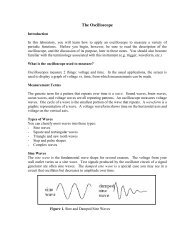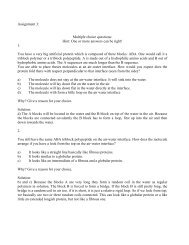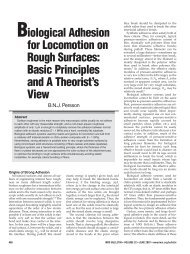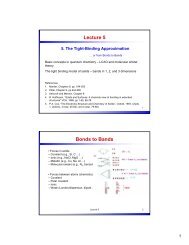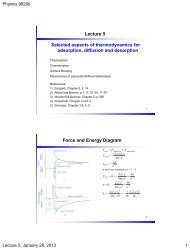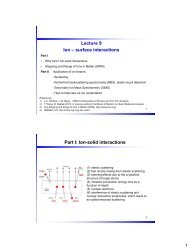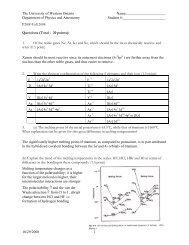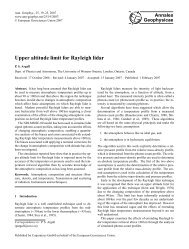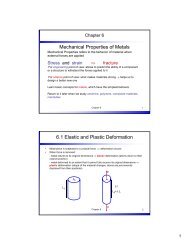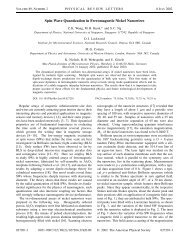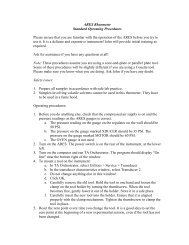Physics 2910G Homework Assignment 1, 2012
Physics 2910G Homework Assignment 1, 2012
Physics 2910G Homework Assignment 1, 2012
Create successful ePaper yourself
Turn your PDF publications into a flip-book with our unique Google optimized e-Paper software.
<strong>Physics</strong> <strong>2910G</strong> <strong>Homework</strong> <strong>Assignment</strong> 1, <strong>2012</strong><br />
1. Consider the circuit below.<br />
Due date Wednesday February 1.<br />
(a) find the potential difference V ab between points A and B.<br />
(b) imagine connecting a wire of zero resistance between A and B. Find the current i<br />
flowing in that wire.<br />
2. In the circuit below, find the current in resistor R 2 .<br />
3. In the circuit shown below, the current through the 220 ohm resistor is 0.10<br />
amperes.<br />
(a) calculate the power dissipated by the 47 ohm resistor.<br />
(b) calculate the EMF of the battery.
4. Consider the circuit below, in which an AC voltage source is connected to a<br />
combination of a resistor, a capacitor and an inductor.<br />
(a) write an expression for the (complex) impedance of the circuit.<br />
(b) find the magnitude of the impedance, in form A+jB<br />
(c) find an expression for the frequency at which the impedance is a maximum or<br />
minimum. Indicate whether it is a maximum or a minimum.<br />
(d) find expressions for the limiting behaviour of the impedance at very low and very<br />
high frequencies.<br />
5. In the circuit show below, C1 = 5 microfarads, C2 = 10 microfarads and R =<br />
1000 ohms. Initially, the switch is open, C1 is charged to 20 volts, and C2 is uncharged.<br />
At time t=0 the switch is closed.<br />
(a) Calculate the voltage across C1 at a much later time. Hint: consider charge<br />
conservation.<br />
(b) The energy stored in a charged capacitor is given by U = CV 2 /2. Calculate the energy<br />
stored in C1 and C2 before and after closing the switch.<br />
(c) Derive an expression for the power dissipated in R as a function of time for t>0.<br />
(d) Integrate your expression from (c) to find the total energy dissipated by R. Compare<br />
with your answer from (b).



